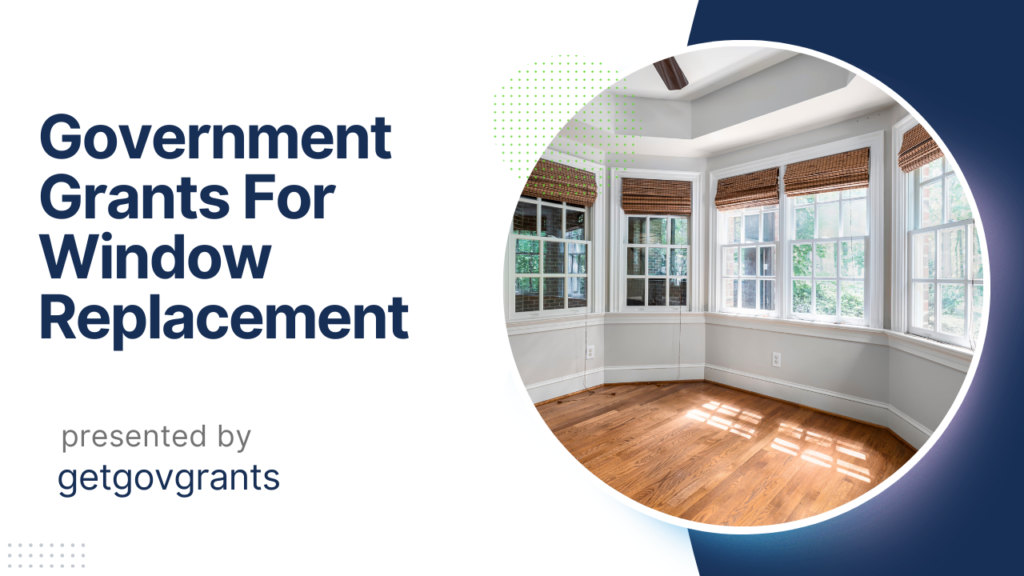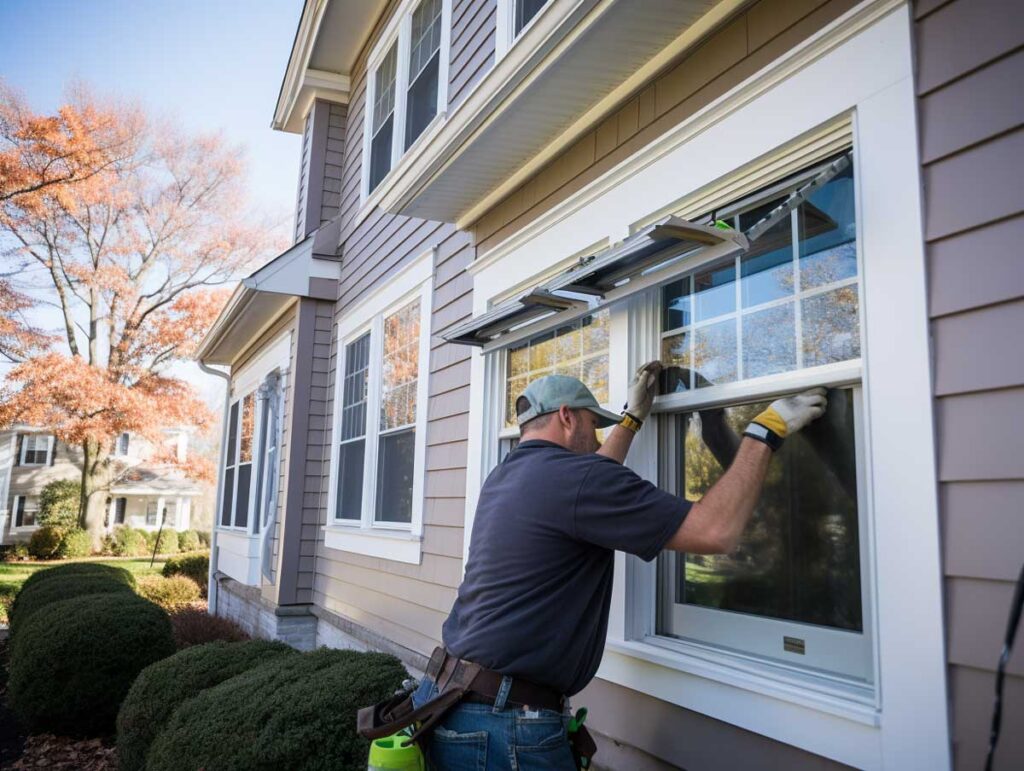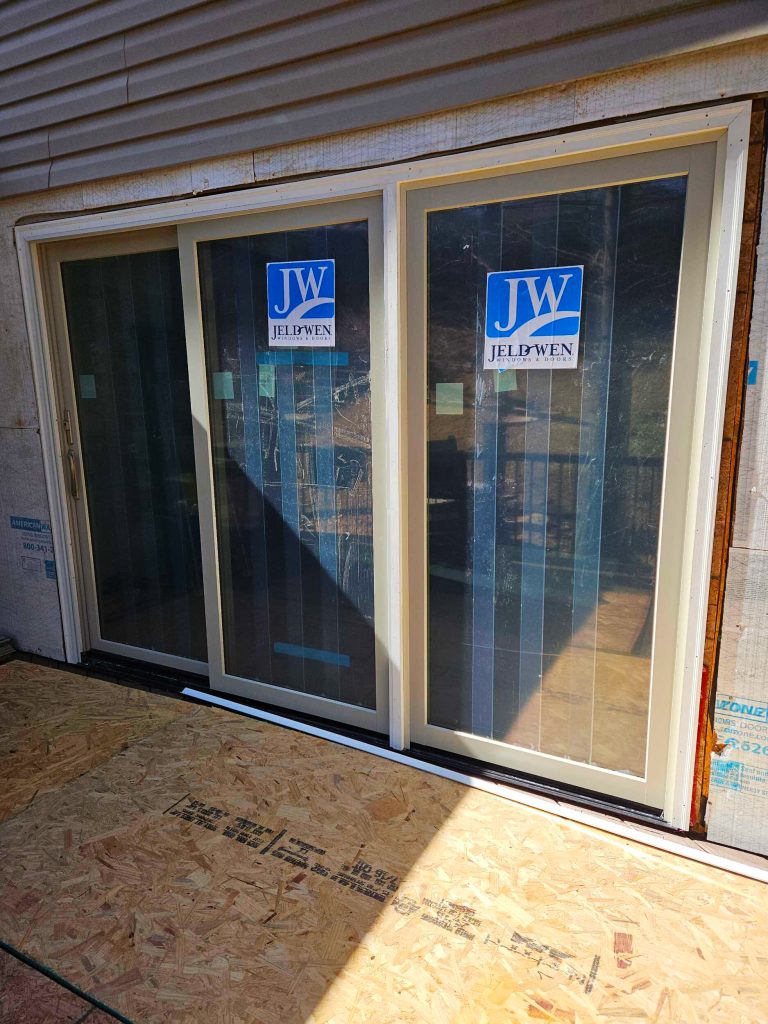Government Grants for Window Replacement: Replacing windows can be an expensive undertaking, but there are numerous government grants available that provide financial assistance to help homeowners improve energy efficiency and reduce their overall utility costs.
In this guide, we explore how to obtain government grants to replace windows, the available programs, eligibility criteria, and the application process.
According to the U.S. Department of Energy, heat gain and loss through windows is responsible for 25% to 30% of residential heating and cooling energy use.

By upgrading to energy-efficient windows, homeowners can reduce their energy consumption, lower their utility bills, and contribute to environmental sustainability.
Here is a complete guide to understanding and accessing these grants.
Why Replace Your Windows?
Old, drafty windows can cause significant energy loss, causing heating and cooling systems to work harder. By replacing them with energy-efficient windows, you can:
✅Reduce energy bills – Energy-efficient windows can reduce heating and cooling costs by up to 25%.
✅Improve comfort – New windows can eliminate drafts and maintain a consistent indoor temperature.
✅Increase home value – Upgrading your windows can improve your home’s curb appeal and market value.
Read More: Low-Cost or Free Window Replacement for Veterans
Federal Government Grants for Window Replacement
1. Weatherization Assistance Program (WAP)
The Weatherization Assistance Program (WAP) is one of the largest federal initiatives aimed at helping low-income households make their homes more energy efficient.
Window replacement is one of the eligible services under the WAP, and the program focuses on improving the energy efficiency of homes by installing energy-saving windows, among other improvements.
Eligibility:
Low-income families (below 200% of the federal poverty level)
Seniors, people with disabilities, and households with children are given priority
Homeowners and renters (with owner approval)
Application process:
Apply through your local WAP agency
Home energy efficiency assessment required
Scope of work is based on assessment
2. The High-Efficiency Window Replacement Initiative
Often part of local utility programs, this initiative offers rebates or financial assistance for installing energy-efficient windows. Many states and local utilities offer rebates or grants to encourage homeowners to replace old windows with Energy Star-rated windows.
Eligibility:
Homeowners in participating regions
Installation of qualifying windows (e.g., Energy Star)
Sometimes available to renters, depending on state regulations
Application process:
Review your local utility’s energy efficiency programs
Submit receipts and proof of window installation
Receive direct rebates or grants
Read Also: How Can I Get Grants for Asbestos Removal

3. Rural Energy for America Program (REAP)
For rural residents and small businesses, the U.S. Department of Agriculture (USDA) offers the Rural Energy for America Program (REAP). While primarily designed for businesses, homeowners in rural areas may qualify for grants to improve energy efficiency, including window replacement.
Eligibility:
Must be located in a rural area
Homeowners, farmers, and small business owners
Projects that improve energy efficiency, including window replacement
Application Process:
Applications submitted through USDA
Competitive selection based on project impact.
State and Local Grants For Window Replacement
While federal programs are a major source of funding, there are a variety of state and local grants, often geared toward improving energy efficiency and environmental sustainability.
1. Low-Income Home Energy Assistance Program (LIHEAP)
Administered at the state level, LIHEAP helps low-income households manage their energy costs. In some states, LIHEAP funds can be used to replace windows, particularly if it improves energy efficiency.
Eligibility Criteria:
Income eligibility varies by state, generally for households earning less than 150% of the federal poverty level.
How to Apply: You can apply through your state’s LIHEAP office. Specific rules and funding availability differ from state to state, so check local guidelines.
2. State Energy Programs (SEP)
Each state receives funding from the DOE for the State Energy Program (SEP). These funds can go toward energy efficiency improvements to the home, including window replacement. States have broad discretion in the use of SEP funds, so it’s essential to check with your state energy office to learn about available programs.
Eligibility Criteria:
Eligibility varies by state and specific program.
How to apply: Contact your state energy office for details on application procedures and grant availability.
How to Apply For Window Replacement Grants
Applying for these grants and programs typically involves several steps:
Research: Start by researching the programs available in your area. Websites like the U.S. Department of Energy and your state energy office are good places to start.
Eligibility: Check the eligibility requirements for each program. Some programs are income-based, while others may have specific criteria related to age or the condition of your home.
Application: Complete the application process, which may involve providing documentation of your income, home ownership, and the specific improvements you plan to make.
Approval and Installation: Once approved, you can proceed with the window replacement. Be sure to keep all receipts and documentation, as you may need them for reimbursement or tax purposes.
Read Also: Government Grants For HVAC Systems
How to Qualify for Window Replacement Grants
Government grants for window replacement are typically needs-based, with eligibility criteria focusing on income, geographic location, and the specific energy-efficiency improvements being made. Here are general steps you can take to increase your chances of qualifying:

Determine Your Eligibility
Start by checking your household income against the eligibility criteria for specific programs. Low-income households, seniors, and people living in rural areas are typically given priority.
Gather the Necessary Documentation
Most grant applications require detailed documentation, including income verification, proof of ownership or tenancy, and an assessment of your home’s current energy efficiency.
Complete an Energy Audit
Some programs require a home energy audit to assess the energy-saving potential of proposed window replacements. This audit will determine the scope of the grant or reimbursement.
Submit Your Application
Once you’ve determined eligibility and gathered your documentation, submit your application through the appropriate program channels.
Follow-up
After you submit your application, follow up with program administrators to ensure your application is moving forward. Processing delays are common, but persistence can help you secure funding more quickly.
How Do I Find Local Energy Efficiency Programs?
Finding local energy efficiency programs can be simple if you know where to look. Here are some steps to help you get started:
Check government websites
Department of Energy (DOE): DOE’s Center for State and Local Solutions provides resources and information on local energy efficiency programs.
Environmental Protection Agency (EPA): EPA offers information on local residential energy efficiency programs and policies2.
Visit state and local energy offices
Many states have their own energy offices that offer energy efficiency programs and incentives. For example, California’s Energy Upgrade California program and New York’s NYSERDA program.
Utility company programs
Local utility companies often offer rebates and incentives for energy efficiency upgrades. Visit your utility’s website or contact their customer service for more information.
Community development programs
Local governments may offer grants or low-interest loans for energy efficiency upgrades through community development programs. Visit your city or county’s official website for more details.
Online websites
Websites such as the Database of State Incentives for Renewable Energy and Efficiency (DSIRE) provide comprehensive listings of energy efficiency incentives and policies by state.
Local nonprofits and entities
Nonprofit organizations focused on sustainability and energy efficiency may offer programs or can direct you to resources available in your area.
Home energy audits
Some programs begin with a home energy audit to identify the most effective energy-saving measures. These audits can often be arranged through local energy offices or utility companies.
Other Financial Assistance Options
1. PACE Financing
Property Assessed Clean Energy (PACE) financing allows homeowners to finance energy efficiency improvements, including window replacement, through property tax assessments. While PACE is not a grant, it offers an innovative financing option with repayment through property taxes, making it accessible to many homeowners.
Benefits:
✅No upfront costs.
✅Long repayment terms, tied to the property rather than the individual.
How to apply: Check to see if PACE is available in your state and contact a local provider for details.
2. Utility rebates
Many local utility companies offer rebates for energy efficiency improvements in the home. Windows that meet certain energy efficiency standards may qualify for rebates, reducing the overall cost of replacement.
How to apply: Contact your utility provider for information on rebate programs in your area and specific requirements for window replacement projects.
Conclusion
Government grants and programs for window replacement can make energy efficiency upgrades more affordable. By taking advantage of these resources, you can improve your home’s energy efficiency, reduce your energy bills, and contribute to a more sustainable future.
Start by researching available programs and determining your eligibility to take the first step toward a more energy-efficient home.
- Broad Horizons Scholarship for High School Juniors - May 28, 2025
- Elevate Women in Technology Scholarship - May 28, 2025
- BIPOC Yoga Teacher Training Scholarship - May 27, 2025
